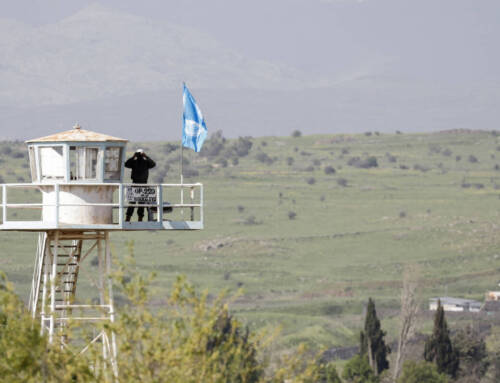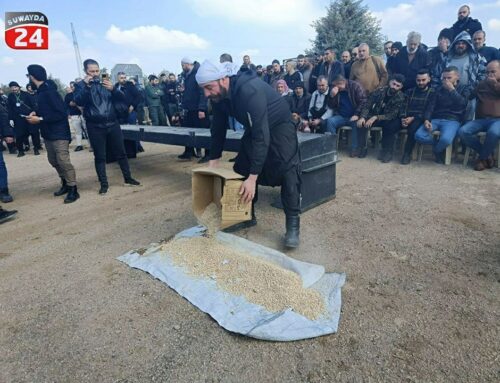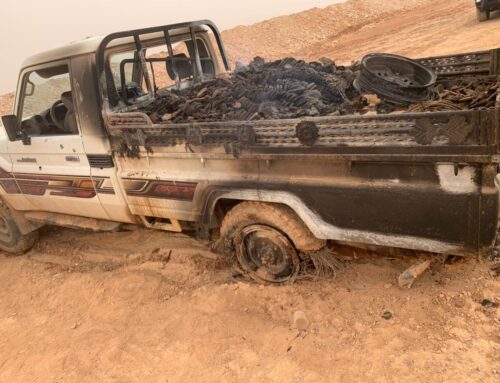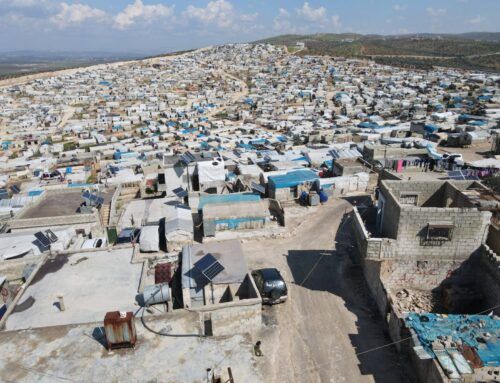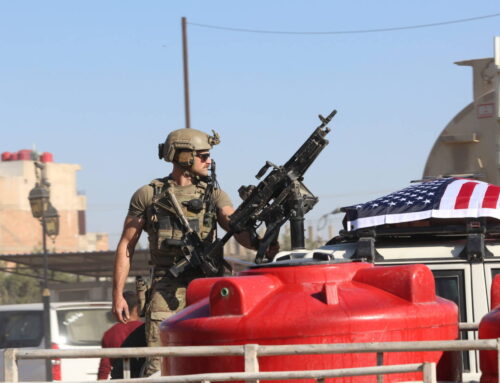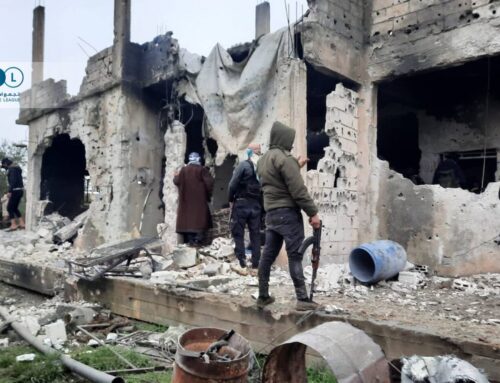‘The Coalition and the Free Army leadership have not given Homs anything’
September 23, 2013 Yaman Abu Fouad was born in the […]
24 September 2013
September 23, 2013
Yaman Abu Fouad was born in the Old City of Homs and lives in Jourat Al-Shiyah, one of the neighborhoods under siege by the regime. Abu Fouad, 33, is a citizen journalist with the consolidated Media Office in Homs, an umbrella group of local civic organizations. He has a Bachelor’s degree in mathematics and considers himself a moderate Islamist. Abu Fouad tells Syria Direct why he believes the only hope for Homs is for the city’s sons to defend it.
Q: What is the latest from Homs?
A: Civilians in Homs wake up to the sound of shelling. The regime bombarded us from the [pre-denominantly Alawite] loyalist neighborhoods, with continuous sweeps by snipers positioned atop the towers surrounding our besieged neighborhoods. In recent months, the regime has attempted to storm Bab Houd and Wadi Al-Sayeh, with skirmishes on the outskirts of Jouret Shiyah and Khaldiya.
Q: How do you know that there have been attempts to storm the neighborhoods that you mentioned?
A: By the Syrian Army and the Hezbollah militias’ use of weapons that they generally use prior to such raids. Afterward, soldiers from Assad’s army will infiltrate the revolutionaries’ positions, [facilitated by] the chaos that these weapons cause and the dust that impedes vision. During this time, they will also carry out shelling with tanks or other vehicles.
Q: What is the nature of the blockade that the regime is imposing on the Old City of Homs?
A: The siege is a ring (“collar”) surrounding 14 neighborhoods of Homs. The regime forces have taken control over some of the surrounding neighborhoods in the Old. And in these neighborhoods under its control, the regime is using people as human shields, namely the opposition neighborhoods like Al-Ghouta, Wa’er, Bab Al-Saba’a, Jabel Jandali, Al-Bayda, and other neighborhoods that make up this ring. It uses both vehicles and heavy weaponry to reinforce the ring, namely T72 tanks.
There are also towers upon which snipers with 14.5-caliber machine guns are positioned, who are able to monitor almost all the roads inside besieged Homs from their position.
The regime is cracking down on families inside the blockade by cutting off water and electricity, which was only restored recently from existing underground wells in our neighborhoods and small electricity generators that work on diesel, which themselves are nearly depleted due to the near exhaustion of diesel stores. This forces us to strictly ration.
Q: Which regime forces play a role in the siege and how many are there?
A: The regime forces are what remains of Syrian Army soldiers, in addition to the National Defense Force, otherwise known as the shabiha, that the Assad regime has given legitimacy to fight the Syrians, along with Iranian “experts” and Hezbollah forces, plus other soldiers from Turkey who were spotted in Qasour alongside Air Force intelligence. [These] mercenaries work under the banner of the regime army, along with others of Iraqi citizenship. A number of them (the Syrian Army) were present [here] during various stages of the siege, and sometimes their number is small as a result of mass defections.
There were periods during which their number was small, so the regime compensated by increasing the tanks and intensifying the missile shelling, and there were days when we saw more than 400 shells dropped.
Q: Tell me about the people of blockaded Homs – what is their number now and how many have fled during the past year?
A: There are about 800 urban families remaining in blockaded Homs today, some of them are Christians who suffer with us through the blockade, but the number of these families remaining is small compared to the number of people who fled the city. The majority evacuated during the past year, following the destruction of most of the city.
Q: You’ve told me that there are fighters from Hezbollah, the Iranians, and Iraqi militias. How do you know that and have you seen or heard this from people you trust?
A: I have witnessed cases and heard about cases from trusted activists and fighters. Not long ago, during my time in the Qasour neighborhood…[there were] clearly soldiers speaking Turkish, and in other locations fighters have been able to identify Hezbollah calls
Q: Tell me about the Turkish elements, who are they and why do they join the regime army in this siege? Isn’t this a strange phenomenon?
A: They are Alawite Turks from Antakya or the Askandroun Brigade. They join the regime in the ethnic cleansing that it practices, unfortunately. We have recordings [of them] and some of them speak Arabic and Turkish, and they curse us and curse our religious symbols in an attempt to provoke us but, thanks be to God, the revolutionary fighters were aware of this. Some of [these Turkish fighters] participated in the massacre of Banyas, so they said to us, “we want to squash you like the people of Banyas.”
Q: What is now destroyed in the Old City of Homs due to the siege of the past year, compared to what was before the siege?
A: The difference is very vast. The damage prior to the siege was limited to certain, scattered buildings in neighborhoods of Homs, but following the period in which the siege tightened, the destruction has has hit entire neighborhoods. So if we speak about the Qarabeid neighborhood, there is no longer anything there except for a small number of homes that are somewhat intact, or rooms for living. Such [is the case in] my neighborhood, Jouret Shayeh, as well as Qasour, whereas the neighborhoods of Bayada, Wadi Sayeh, and Karm Shimshim, which were all occupied, are maybe less likely to be destroyed. Bab Houd, an archeological area, remains a unique case in that it is the most susceptible to damage because it consists, for the most part, of ancient homes. It was destroyed and has become ruins. The percentage destroyed today in Homs is 90%.
Q: What about the citizens inside the blockade, how do they obtain food, water, and electricity?
A: There is a system for food in Homs. We were not aware of its importance [until now], and it is a system of supply that serves every family. This system is built on storage of various types of food, the most important of which are grains like wheat, rice, and bulgur, and oils, molasses, and materials for preserving [food] over a long period of time. Thankfully, these houses were full of such materials, in addition to the stores in warehouses and trade shops in those neighborhoods.
As for water, it is being extracted from wells, and it is not safe for drinking and has caused some illnesses, especially among the children, notably jaundice and abdominal pain and sometimes skin rashes appear and mouth sores.
Q: Do the citizens have any opportunity to escape from the blockade?
A: There is no possibility of escape for families. Some young men have attempted escape, most of whom failed or [now] face death because they were arrested by the regime army that is blockading the area.
Q: In terms of the Free Army, is there a unified leadership and weapons of sufficient quality?
A: As for unified leadership, yes there is a local military council here, and there are sometimes differences among the battalions…but I swear to you that [these differences] disappear in the trenches. We announced the battle for the liberation of Homs, including all the battalions under one name, and we do not raise the name of any one battalion but the name Homs. We have adequate weapons and defensive ammunition, especially given the presence of [our fighting] heroes – I have never seen anything like them before – they are Syrian, our compatriots, and we admire them so much.
But we are lacking quality weapons to repel tanks and defend against air raids, which destroy buildings and allow the regime to constantly progress without storming the city [on foot], and afterward destroy entire neighborhoods on Assad’s whim. We burn the country (scorched earth) and nothing has come to us from the [FSA] Joint Command. Each time they prep us for weapons and ammunition, nothing comes of it because of the severe security “collar,” in addition to the involvement of some merchants of the revolution, in the Homs suburbs, who sell and stockpile weapons that were en route to us from here and there.
Q: What do you hear from the Coalition or Free Army leadership outside of Homs about what is happening in the Old City of Homs?
A: I don’t trust what I hear these days because there are so many rumors but what I am very certain of is that the Coalition and the Free Army leadership have not given Homs anything, and [I stand by these words]. You know that for months we have been appealing to the Coalition to break the siege on these families, just as we have been appealing to the Coalition in the northern suburbs, where a greater stockpile of weapons has arrived, in the hope of breaking the siege, and until this hour they have not lifted a finger.

